Name Poisoning Alexander | ||
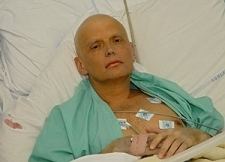 | ||
Poisoning of Alexander Litvinenko
Alexander Litvinenko was a former officer of the Russian Federal Security Service (FSB) and KGB, who fled from court prosecution in Russia and received political asylum in the United Kingdom.
Contents
- Poisoning of Alexander Litvinenko
- Background
- Illness and poisoning
- Poison
- 210Po content in the body of Litvinenko
- Thallium initial hypothesis
- Death and last statement
- Initial steps
- Polonium trails
- British extradition request
- Extradition declined
- BBC programme
- Litvinenko Inquiry
- Possibly related events
- Sources and production of polonium
- Possible motivation for using polonium 210
- Theories
- Suspects
- Other persons related to the case
- Background history
- October 2006
- November 2006
- December 2006
- February 2007
- May 2007
- July 2007
- October 2007
- December 2008
- Deaths from ingesting radioactive materials
- Similar suspicious deaths and poisonings
- References
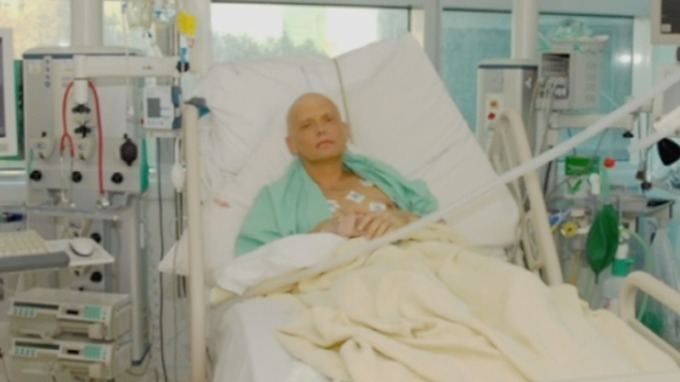
On November 1, 2006, Litvinenko suddenly fell ill and was hospitalized. He died three weeks later, becoming the first confirmed victim of lethal polonium-210-induced acute radiation syndrome. Litvinenko's allegations about the misdeeds of the FSB and his public deathbed accusations that Russian president Vladimir Putin was behind his unusual malady resulted in worldwide media coverage.
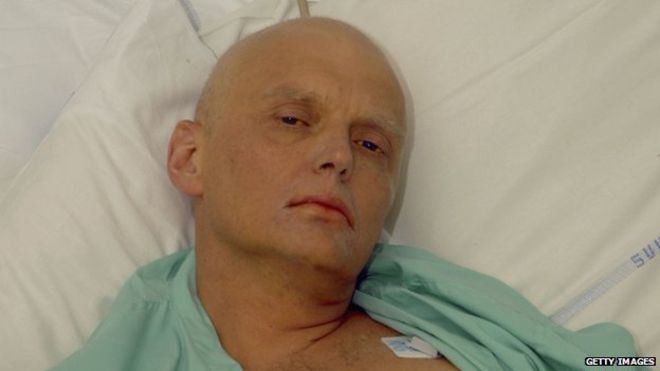
Subsequent investigations by British authorities into the circumstances of Litvinenko's death led to serious diplomatic difficulties between the British and Russian governments. During the 2014–2015 trial the Scotland Yard representative witnessed that "the evidence suggests that the only credible explanation is in one way or another the Russian state is involved in Litvinenko's murder". Another witness stated that Dmitry Kovtun had been speaking openly about the plan to kill Litvinenko that was intended to "set an example" as a punishment for a "traitor". The main suspect in the case, a former officer of the Russian Federal Protective Service (FSO), Andrey Lugovoy, remains in Russia. As a member of the Duma, he now enjoys immunity from prosecution. Before he was elected to the Duma, the British government tried to have him extradited without success.
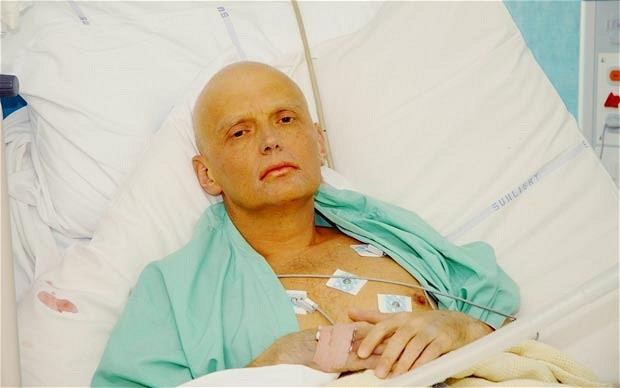
Background
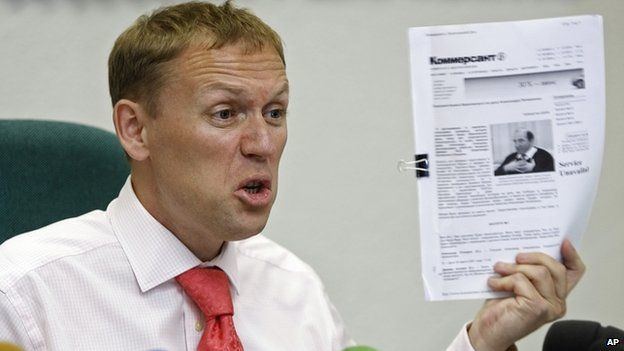
Alexander Litvinenko was a former officer of the Russian Federal Security service who escaped prosecution in Russia and received political asylum in the United Kingdom. In his books, Blowing up Russia: Terror from Within and Lubyanka Criminal Group, Litvinenko described Russian president Vladimir Putin's rise to power as a coup d'état organised by the FSB. He alleged that a key element of the FSB's strategy was to frighten Russians by bombing apartment buildings in Moscow and other Russian cities. He accused Russian secret services of having arranged the Moscow theater hostage crisis, through their Chechen agent provocateur, and having organised the 1999 Armenian parliament shooting. He also stated that the terrorist Ayman al-Zawahiri was under FSB control when he visited Russia in 1997.
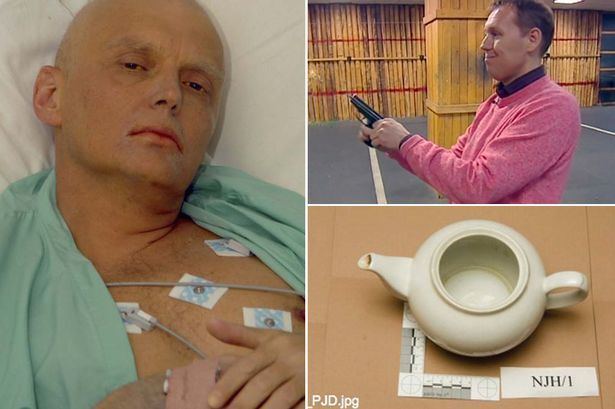
Upon his arrival in London, he continued to support the Russian oligarch in exile, Boris Berezovsky, in his media campaign against the Russian government.

Just two weeks before his death, Litvinenko accused Putin of ordering the assassination of Anna Politkovskaya.
Illness and poisoning
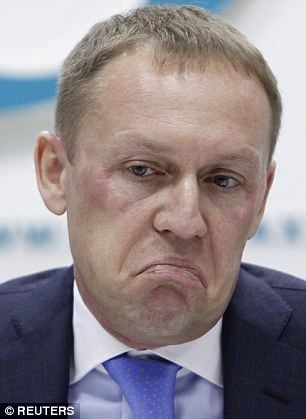
On 1 November 2006, Litvinenko suddenly fell ill. Earlier that day he had met two former KGB officers, Andrey Lugovoy and Dmitry Kovtun. Lugovoy is a former bodyguard of Russian ex-Prime Minister Yegor Gaidar (also reportedly poisoned in November 2006) and former chief of security for the Russian TV channel ORT. Kovtun is now a businessman. Litvinenko had also had lunch at Itsu, a sushi restaurant on Piccadilly in London, with an Italian officer and "nuclear expert", Mario Scaramella, to whom he reportedly made allegations regarding Romano Prodi's connections with the KGB. Scaramella, attached to the Mitrokhin Commission investigating KGB penetration of Italian politics, claimed to have information on the death of Anna Politkovskaya, 48, a journalist who was killed at her Moscow apartment in October 2006. He passed Litvinenko papers supposedly concerning her fate. On 20 November, it was reported that Scaramella had gone into hiding and feared for his life.
For several days after 1 November, Litvinenko experienced severe diarrhea and vomiting. At one point, he could not walk without assistance. As the pain intensified, Litvinenko asked his wife to call an ambulance for assistance. For several weeks, Litvinenko's condition worsened as doctors searched for the cause of the illness. Surrounded by friends, Litvinenko became physically weak, and spent periods unconscious. A photograph was taken of Litvinenko on his deathbed and released to the public. "I want the world to see what they did to me," Litvinenko said.
Poison
On 3 November 2006, Litvinenko (under the name of Edwin Carter) was admitted for further investigation at Barnet General Hospital, London. After being moved from his local hospital in north London to University College Hospital in central London for intensive care, his blood and urine samples were sent to the UK's Atomic Weapons Establishment (AWE) for testing. Scientists at AWE tested for radioactive poison using gamma spectroscopy. No gamma rays were detected; however, a small spike was noticed at an energy of 803 kilo-electron volts (keV). The BBC reported that by coincidence another scientist, who had worked on Britain's early atomic bomb programme decades before, happened to overhear a discussion about the small spike and recognised it as the gamma ray signal from polonium-210, which was a critical component of early nuclear bombs. On the evening of 22 November, shortly before his death, his doctors were informed the poison was likely to be polonium-210. Further tests on a larger urine sample using spectroscopy designed to detect alpha radiation confirmed the result the following day.
Unlike most common radiation sources, polonium-210 emits very little gamma radiation, but large amounts of alpha particles which do not penetrate even a sheet of paper or the epidermis of human skin, and is therefore invisible to normal radiation detectors. This explained why tests conducted by doctors and Scotland Yard at the hospital with Geiger counters were negative. Both gamma rays and alpha particles are classified as ionizing radiation which can cause radiation damage. An alpha-emitting substance can cause significant damage only if ingested or inhaled, acting on living cells like a short-range weapon. Hours before his death, Litvinenko was tested for alpha-emitters using special equipment.
Shortly after his death, the UK's Health Protection Agency (HPA) said tests had established that Litvinenko had significant amounts of the radionuclide polonium-210 (210Po) in his body. British and US government officials said the use of 210Po as a poison had never been documented before, and it was probably the first time anyone had been tested for the presence of 210Po in their body. The poison was in Litvinenko's cup of tea. Those who had contact with Litvinenko may also have been exposed to radiation.
210Po content in the body of Litvinenko
The symptoms seen in Litvinenko appeared consistent with an administered activity of approximately 2 GBq (50 mCi) which corresponds to about 10 micrograms of 210Po. That is 200 times the median lethal dose of around 238 μCi or 50 nanograms in the case of ingestion.
The studies of the biodistribution of 210Po using gamma-ray spectrometry in post-mortem samples were used to estimate intake as 4.4 GBq.
Thallium – initial hypothesis
Scotland Yard initially investigated claims that Litvinenko was poisoned with thallium. It was reported that early tests appeared to confirm the presence of the poison. Among the distinctive effects of thallium poisoning are hair loss and damage to peripheral nerves, and a photograph of Litvinenko in hospital, released to the media on his behalf, indeed showed his hair to have fallen out. Litvinenko attributed his initial survival to his cardiovascular fitness and swift medical treatment. It was later suggested a radioactive isotope of thallium might have been used to poison Litvinenko. Dr. Amit Nathwani, one of Litvinenko's physicians, said "His symptoms are slightly odd for thallium poisoning, and the chemical levels of thallium we were able to detect are not the kind of levels you'd see in toxicity." Litvinenko's condition deteriorated, and he was moved into intensive care on 20 November. Hours before his death, three unidentified circular-shaped objects were found in his stomach via an X-ray scan. It is thought these objects were almost certainly shadows caused by the presence of Prussian blue, the treatment he had been given for thallium poisoning.
Death and last statement
Late on 22 November, Litvinenko's heart failed; the official time of death was 9:21 pm at University College Hospital in London.
The autopsy took place on 1 December. Litvinenko had ingested polonium-210, a poisonous radioactive isotope. Mario Scaramella, who had eaten with Litvinenko, reported that doctors had told him the body had five times the lethal dose of polonium-210. Litvinenko's funeral took place on 7 December at the Central London mosque, after which his body was buried at Highgate Cemetery in North London.
On 25 November, an article attributed to Litvinenko was published by the Mail on Sunday Online entitled Why I believe Putin wanted me dead...
In his last statement he said about Putin:
…this may be the time to say one or two things to the person responsible for my present condition. You may succeed in silencing me but that silence comes at a price. You have shown yourself to be as barbaric and ruthless as your most hostile critics have claimed. You have shown yourself to have no respect for life, liberty or any civilised value. You have shown yourself to be unworthy of your office, to be unworthy of the trust of civilised men and women. You may succeed in silencing one man but the howl of protest from around the world will reverberate, Mr Putin, in your ears for the rest of your life. May God forgive you for what you have done, not only to me but to beloved Russia and its people.
Initial steps
Greater London's Metropolitan Police Service Terrorism Unit has been investigating the poisoning and death. The head of the Counter-Terrorism Unit, Deputy Assistant Commissioner Peter Clarke, stated the police "will trace possible witnesses, examine Mr. Litvinenko's movements at relevant times, including when he first became ill and identify people he may have met. There will also be an extensive examination of CCTV footage." The United Kingdom Government COBRA committee met to discuss the investigation. Richard Kolko from the United States FBI stated "when requested by other nations, we provide assistance" – referring to the FBI now joining the investigation for their expertise on radioactive weapons. The Metropolitan Police announced on 6 December 2006 that it was treating Litvinenko's death as murder. Interpol has also joined the investigation, providing "speedy exchange of information" between British, Russian and German police.
Polonium trails
Detectives traced three distinct polonium trails in and out of London, at three different dates, which according to the investigation suggests Andrey Lugovoy and Dmitry Kovtun made two failed attempts to administer polonium to Litvinenko before the final and successful one. The first attempt took place on 16 October 2006, when radioactive traces were found in all places visited by the FSB operatives before and after their meeting with Litvinenko. They administered the poison to his tea, but he did not drink it.
Apparently, Lugovoy and Kovtun did not fully realize they were handling a radioactive poison. Journalist Luke Harding described their behaviour as "idiotic, verging on suicidal"; while handling a leaky container, they stored it in their hotel rooms, used ordinary towels to clean up leaks, and eventually disposed of the poison in the toilet. On 17 October, perhaps realizing they contaminated their rooms, they prematurely checked out, moved to another hotel, and left London the next day.
Another unsuccessful assassination attempt took place on 25 October, when Lugovoy and Kovtun flew to London again. They left radioactive traces again in their hotel prior to meeting Litvinenko, but did not administer the poison, perhaps due to security cameras in the meeting room. They again disposed of the poison via their room's toilet, and left London.
The third attempt to poison Litvinenko took place at around 5 pm of 1 November in the Millennium Hotel in Grosvenor Square. The bus he travelled in to the hotel had no signs of radioactivity – but large amounts had been detected at the hotel. Polonium was subsequently found in a fourth-floor room and in a cup in the Pine Bar at the hotel. After the Millennium bar, Litvinenko stopped at the office of Boris Berezovsky. He used a fax machine, where radioactive contamination was found later. At 6 pm, Akhmed Zakayev picked Litvinenko up and brought him home to Muswell Hill. The amount of radioactivity left by Litvinenko in the car was so significant that the car was rendered unusable. Everything that he touched at home during the next three days was contaminated. His family was unable to return to the house even six months later. His wife tested positive for ingesting polonium, but did not leave a secondary trail behind her. This suggested that anyone who left a trail could not have picked up the polonium from Litvinenko (possibly, including Lugovoy and Kovtun). The patterns and levels of radioactivity the assassins left behind suggested that Litvinenko ingested polonium, whereas Lugovoy and Kovtun handled it directly. The human body dilutes polonium before excreting it in sweat, which results in a reduced radioactivity level. There were also traces of Po-210 found at the Hey Jo/Abracadabra bar, Dar Marrakesh restaurant, and Lambeth-Mercedes taxis.
Besides Litvinenko, only two people left polonium trails: Lugovoy and Kovtun, who were school friends and worked previously for Russian intelligence in the KGB and the GRU, respectively. They left more significant traces of polonium than Litvinenko, indicating that they handled the radioactive material directly, and did not ingest it.
Lugovoy and Kovtun met Litvinenko in the Millennium hotel bar twice, on 1 November (when the poisoning took place), and earlier, on 16 October. Trails left by Lugovoy and Kovtun started on 16 October, in the same sushi bar where Litvinenko was poisoned later, but at a different table. It was assumed that their first meeting with Litvinenko was either a rehearsal of the future poisoning, or an unsuccessful attempt at the poisoning.
Traces left by Lugovoy were also found in the office of Berezovsky that he visited on 31 October, a day before his second meeting with Litvinenko. Traces left by Kovtun were found in Hamburg, Germany. He left them on his way to London on 28 October. The traces were found in passenger jets BA875 and BA873 from Moscow to Heathrow on 25 and 31 October, as well as flights BA872 and BA874 from Heathrow to Moscow on 28 October and 3 November.
Andrey Lugovoy has said he flew from London to Moscow on a 3 November flight. He stated he arrived in London on 31 October to attend the football match between Arsenal and CSKA Moscow on 1 November. When the news broke that a radioactive substance had been used to murder Litvinenko, a team of scientists rushed to find out how far the contamination had spread. It led them on a trail involving hundreds of people and dozens of locations.
British Airways later published a list of 221 flights of the contaminated aircraft, involving around 33,000 passengers, and advised those potentially affected to contact the UK Department of Health for help. On 5 December they issued an email to all of their customers, informing them that the aircraft had all been declared safe by the UK's Health Protection Agency and would be re-entering service.
British extradition request
British authorities investigated the death and it was reported on 1 December that scientists at the Atomic Weapons Establishment had traced the source of the polonium to a nuclear power plant in Russia. On 3 December, reports stated that Britain had demanded the right to speak to at least five Russians implicated in Litvinenko's death, and Russian Foreign Minister Sergey Lavrov asserted that Moscow was willing to answer "concrete questions." Russian Prosecutor-General Yuri Chaika said on Tuesday 5 December that any Russian citizen who may be charged in the poisoning will be tried in Russia, not Britain. Moreover, Chaika stated that UK detectives may ask questions to Russian citizens only in the presence of Russian prosecutors.
On 28 May 2007 the British Foreign Office submitted a formal request to the Russian Government for the extradition of Andrey Lugovoy to the UK to face criminal charges relating to Litvinenko's murder.
Extradition declined
The Russian General Prosecutor's Office declined to extradite Lugovoy, citing that extradition of citizens is not allowed under the Russian constitution (Article 61 of the Constitution of Russia). Russian authorities later said that Britain has not handed over any evidence against Lugovoy. Professor Daniel Tarschys, former Secretary General of the Council of Europe, commented that the Russian Constitution actually "opens the door" for the extradition, and Russia ratified three international treaties on extradition (on 10 December 1999); namely, the European Convention on Extradition and two Additional Protocols to it. Yury Fedotov, Ambassador of the Russian Federation, pointed out that when the Russian Federation ratified the European Convention on Extradition it entered a declaration concerning Article 6 in these terms: "The Russian Federation declares that in accordance with Article 61 (part 1) of the Constitution of the Russian Federation, a citizen of the Russian Federation may not be extradited to another state."
BBC programme
On 7 July 2008, a British security source told the BBC's Newsnight programme: "We very strongly believe the Litvinenko case to have had some state involvement. There are very strong indications." The British government claimed that no intelligence or security officials were authorised to comment on the case.
Litvinenko Inquiry
In January 2016, a UK public inquiry, headed by Sir Robert Owen, found that Andrey Lugovoy and Dmitry Kovtun were responsible for the poisoning of Litvinenko. The inquiry also found that there was a strong probability that Lugovoy and Kovtun were acting under the direction of the FSB, and that their actions were probably approved by both Nikolai Patrushev, Director of the FSB, and President Vladimir Putin.
Possibly related events
On 2 March 2007, Paul Joyal, a former director of security for the U.S. Senate intelligence committee, who the previous weekend alleged on national television that the Kremlin was involved in the poisoning of Litvinenko, was shot near his Maryland home. An FBI spokesman said the agency was "assisting" the police investigation into the shooting. Police would not confirm details of the shooting or of the condition of Joyal. A person familiar with the case said he was in critical condition in hospital. It was reported that while there were no indications that the shooting was linked to the Litvinenko case, it is unusual for the FBI to get involved in a local shooting incident. A person familiar with the situation said NBC had hired bodyguards for some of the journalists involved in the program.
In January 2007, the Polish newspaper Dziennik revealed that a target with a photo of Litvinenko on it was used for shooting practice by the Vityaz Training Centre in Balashikha in October 2002. The centre was not affiliated with the government and trained bodyguards, debt collectors and private security forces, although in November 2006 the centre was used by the Vityaz for a qualification examination due to their own centre being under renovation. The targets were photographed when the chairman of the Federation Council of Russia Sergei Mironov visited the centre on 7 November 2006.
Sources and production of polonium
A freelance killer would probably not be able to manufacture polonium from commercially available products in the amounts used for Litvinenko's poisoning, because more than microscopic amounts of polonium can only be produced in state-regulated nuclear reactors.
Contradicting this, an antistatic fan sold for $22.50 by NRD Static Control LLC of New York in the United States contains 31,500 microcuries of polonium-210. In theory, this is more than ten lethal doses, and someone with lab experience could extract it.
As production of polonium-210 was discontinued in most countries in late 2000s, all of the world's legal polonium-210 (210Po) production occurs in Russia in RBMK reactors. About 85 grams (450,000 Ci) are produced by Russia annually for research and industrial purposes. According to Sergei Kiriyenko, the head of Russia's state atomic energy agency, RosAtom, around 0.8 grams per year is exported to U.S. companies through a single authorized supplier.
The production of polonium starts from bombardment of bismuth (209Bi) with neutrons at the Mayak nuclear reactors in Ozersk, near the city of Chelyabinsk in Russia. The product is then transferred to the Avangard Electromechanical Plant in the closed city of Sarov. This of course does not exclude the possibility that the polonium that killed Litvinenko was imported by a licensed commercial distributor, but no one—including the Russian government—has proposed that this is likely, particularly in regard to the radiation detected on the British Airways passenger jets travelling between Moscow and London. Russian investigators have said they could not identify the source of polonium.
Polonium-210 has a half-life of 138 days and decays to the stable daughter isotope of lead, 206Pb. Therefore, the source is reduced to about one sixteenth of its original radioactivity about 18 months after production. By measuring the proportion of polonium and lead in a sample, one can establish the production date of polonium. The analysis of impurities in the polonium (a kind of "finger print") allows identification of the place of production. The isotope used in killing of Litvinenko has been traced by a British theoretical physics professor Norman Dombey:
The Po-210 used to poison Mr Litvinenko was made at the Avangard facility in Sarov, Russia. One of the isotope-producing reactors at the Mayak facility in Ozersk, Russia, was used or the initial irradiation of bismuth. In my opinion, the Russian state or its agents were responsible for the poisoning.
In addition Dombey pointed out that Avangard delivers a metallic polonium, which must have been further processed into a solution as used in the Litvinenko assassination, involvement of an FSB poison laboratory was also likely.
Possible motivation for using polonium-210
Philip Walker, professor of physics at the University of Surrey said: "This seems to have been a substance carefully chosen for its ability to be hard to detect in a person who has ingested it." Oleg Gordievsky, the most senior KGB agent ever to defect to Britain, made a similar comment that Litvinenko's assassination was carefully prepared and rehearsed by Russian secret services, but the poisoners were unaware that technology existed to detect traces left by polonium-210: "Did you know that polonium-210 leaves traces? I didn’t. And no one did. ...what they didn’t know was that this equipment, this technology exists in the West – they didn’t know that, and that was where they miscalculated."
Nick Priest, a nuclear scientist and expert on polonium who has worked at most of Russia's nuclear research facilities, says that although the execution of the plot was a "bout of stupidity", the choice of polonium was a "stroke of genius". He says: "the choice of poison was genius in that polonium, carried in a vial in water, can be carried in a pocket through airport screening devices without setting off any alarms", adding, "once administered, the polonium creates symptoms that don't suggest poison for days, allowing time for the perpetrator to make a getaway." Priest asserts that "whoever did it was probably not an expert in radiation protection, so they probably didn't realize how much contamination you can get just by opening the top (of the vial) and closing it again. With the right equipment, you can detect just one count per second".
Filmmaker and friend of Litvinenko Andrei Nekrasov has suggested that the poison was "sadistically designed to trigger a slow, tortuous and spectacular demise". Expert on Russia Paul Joyal suggested that "A message has been communicated to anyone who wants to speak out against the Kremlin.... If you do, no matter who you are, where you are, we will find you, and we will silence you, in the most horrible way possible".
Theories
Many theories regarding the Litvinenko poisoning circulated after his death. Circumstances led to the suspicion that he was killed by the Russian secret service. Viktor Ilyukhin, a deputy chairman of the Russian Parliament's security committee for the Communist Party of the Russian Federation, said that he "can’t exclude that possibility." He apparently referred to a recent Russian counter-terrorism law that gives the President the right to order such actions. An investigator of the Russian apartment bombings, Mikhail Trepashkin, wrote in a letter from prison that an FSB team had organised in 2002 to kill Litvinenko. He also reported FSB plans to kill relatives of Litvinenko in Moscow in 2002, although these have not been carried out. State Duma member Sergei Abeltsev commented on 24 November 2006: "The deserved punishment reached the traitor. I am confident that this terrible death will be a serious warning to traitors of all colors, wherever they are located: In Russia, they do not pardon treachery. I would recommend citizen Berezovsky to avoid any food at the commemoration for his accomplice Litvinenko."
Many publications in Russian media suggested that the death of Litvinenko was connected to Boris Berezovsky. Former FSB chief Nikolay Kovalyov, for whom Litvinenko worked, said that the incident "looks like [the] hand of Berezovsky. I am sure that no kind of intelligence services participated." This involvement of Berezovsky was alleged by numerous Russian television shows.
Shortly after the incident Russian government dismissed theories of FSB involvement in the assassination using the argument that Litvinenko was "not important" and "mentally unstable", implying that the government had no interest in killing such an insignificant figure. Eduard Limonov observed that the same argument was raised after assassination of Anna Politkovskaya, and described Litvinenko death as "very public execution".
An explanation put forward by the Russian Government appeared to be that the deaths of Litvinenko and Politkovskaya were intended to embarrass President Putin. Other theories included involvement of rogue FSB members or suggestions that Litvinenko was killed because of his research of certain Russian corporations or state officials, or as a political intrigue to undermine president Putin.
Suspects
Other persons related to the case
Background history
October 2006
November 2006
December 2006
February 2007
May 2007
Extradition requests had been granted in the past (For example, in 2002 Murad Garabayev has been handed to Turkmenistan., Garabayev's extradition was later found unlawful by the Russian courts and he was awarded 20,000 Euros in damages to be paid by the Russian government by the European Court of Human Rights.) Article 63 does not explicitly mention Russian citizens, and therefore does not apply to them, but only to foreign nationals living in Russia. Article 61 supersedes it for the people holding the Russian citizenship.
July 2007
October 2007
December 2008
Deaths from ingesting radioactive materials
According to the IAEA in 1960 a person ingested 74 MBq of radium (assumed to be 226Ra) and this person died four years later. Harold McCluskey survived 11 years (eventually dying from cardio respiratory failure) after an intake of at least 37 MBq of 241Am (He was exposed in 1976). It is estimated that he suffered doses of 18 Gy to his bone mass, 520 Gy to the bone surface, 8 Gy to the liver and 1.6 Gy to the lungs; it is also claimed that a post mortem examination revealed no signs of cancer in his body. The October 1983 issue of the journal Health Physics was dedicated to McCluskey, and subsequent papers about him appeared in the September 1995 issue.
Similar suspicious deaths and poisonings
Comparisons have been made to the alleged 2004 poisoning of Viktor Yushchenko, the alleged 2003 poisoning of Yuri Shchekochikhin and the fatal 1978 poisoning of the journalist Georgi Markov by the Bulgarian Committee for State Security. The incident with Litvinenko has also attracted comparisons to the poisoning by radioactive (unconfirmed) thallium of KGB defector Nikolay Khokhlov and journalist Shchekochikhin of Novaya Gazeta (the Novaya Gazeta interview with the former, coincidentally, prepared by Russian journalist Anna Politkovskaya, who was later found shot to death in her apartment building). Like Litvinenko, Shchekochikhin had investigated the Russian apartment bombings (he was a member of the Kovalev Commission that hired Litvinenko's friend Mikhail Trepashkin as a legal counsel).
KGB defector and British agent Oleg Gordievsky believes the murders of Zelimkhan Yandarbiev, Shchekochikhin, and Politkovskaya and the incident with Litvinenko show that the FSB has returned to the practice of political assassinations, which were conducted in the past by Thirteenth Department of the KGB. A comparison was also made with Roman Tsepov who was responsible for personal protection of Anatoly Sobchak and Putin, and who died in Russia in 2004 from poisoning by an unknown radioactive substance.
Officers of FSB "special forces" liked to use Litvinenko photos for target practice in shooting galleries, according to Russian journalist Yulia Latynina.
